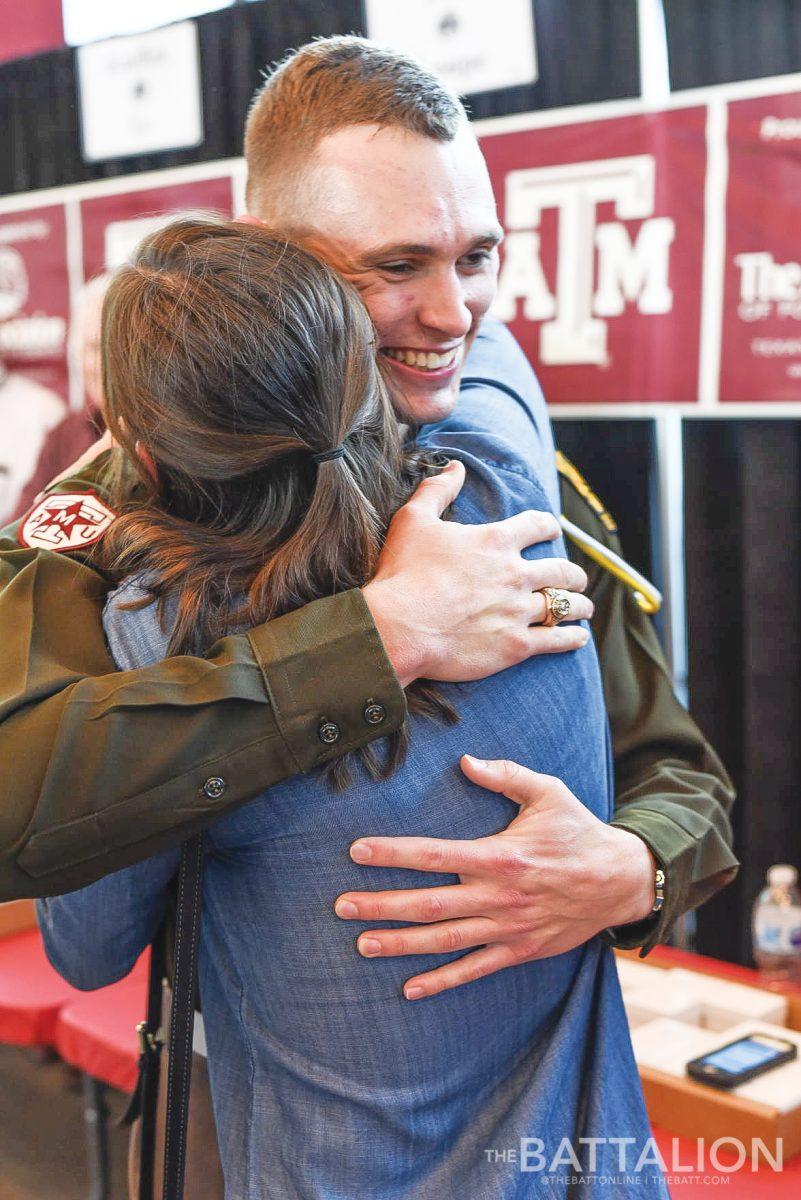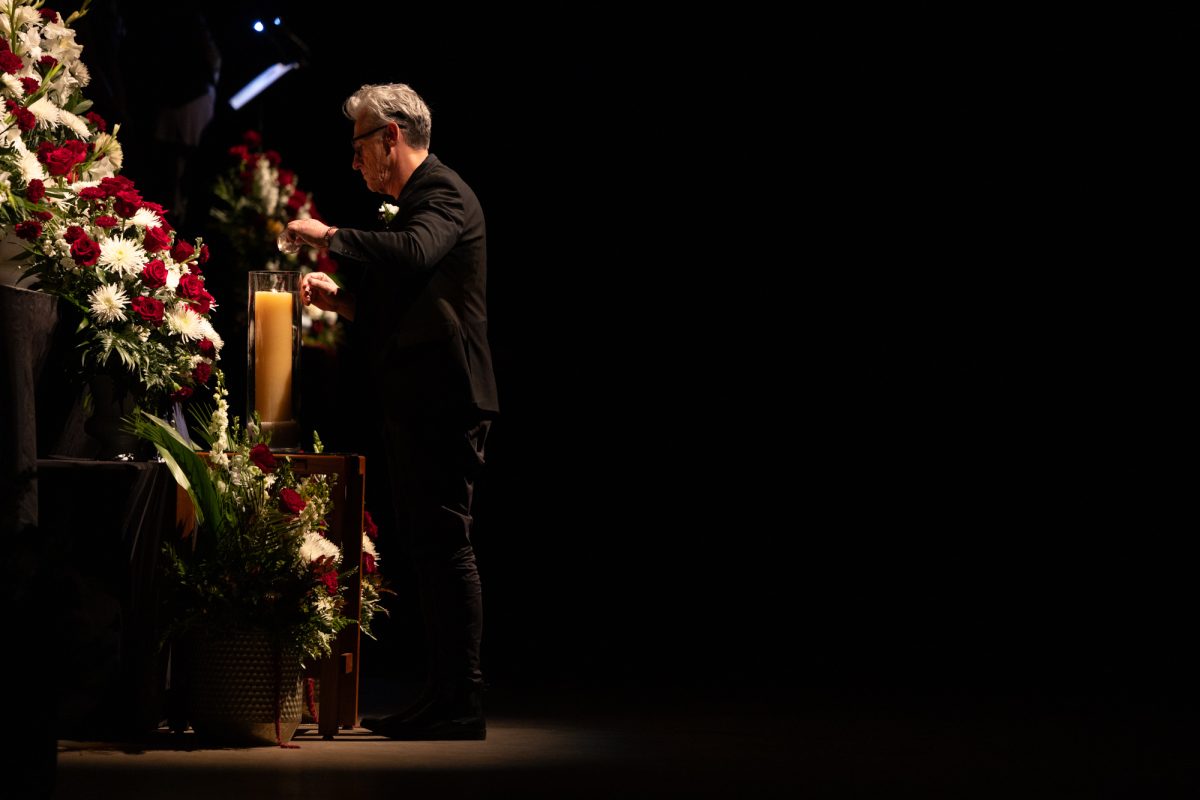Traditions are passed down from Aggie to Aggie over the years, but in many cases those traditions undergo changes. Two of the most iconic Aggie traditions that changed throughout the years are Bonfire and Ring Day.
A burning passion
Beginning in 1907 after a win against rival Tulane Green, the first bonfire was just a pile composed of various wooden objects. The idea was a success among students, and eventually the bonfire moved on-campus, and was used to ignite Aggie Spirit against the University of Texas before the annual Thanksgiving Day football game.
A Battalion article from November of 1939 detailed how two railroads running through College Station shipped in carloads of scrap lumber, railroad ties and other flammable materials for the freshmen to put on the fast-growing heap.
“In addition to material being obtained from the railroads, college residents are furnishing trash and scrap wood for the fire,” the article states.
Bonfire originally used a teepee-style design, but eventually switched to a “wedding-cake” style that allowed for multiple layers of logs, each smaller in diameter than the layer before.
After the integration of non-cadets into the university, Bonfire became a tradition that allowed all students to unify throughout its building process.
In an article published on Nov. 22, 1966, cadet Robert Smith said, “It shows that both non-regs and Cadets Corps members can work together for one of the greatest things of its time in the world.”
The year 1969 saw a record year for Bonfire, and the Nov. 26, 1969 edition of The Battalion reported that stack would reach 105 feet tall — higher than any structure on- campus at the time.
“The gigantic Bonfire symbolizes the burning desire of every Aggie to beat the hell out of Texas,” the article read.
The Battalion covered the many changes in tradition over the years, including those that came out of tragedy. On Nov. 18, 1999, Battalion staff rushed to the scene of the greatest heartbreak in A&M’s history: the Bonfire collapse that resulted in the death of 12 Aggies.
The article reported that Michael Guerra, hall council president of the FHK Complex, was in disbelief upon hearing news of the collapse.
“I had just seen it standing; then it was down,” Guerra said. “It’s something that should never have happened. It’s something that you never expect.”
The university erected a memorial to remember the 12 Aggies, and every year on Nov. 18 at 2:42 a.m., students gather to remember those who lost their lives.
As a result of the loss, the university-sanctioned Aggie Bonfire ceased to exist. However, students looking to continue the tradition and honor the fallen formed Student Bonfire in 2003. The group constructs a bonfire stack at an off-campus site each year.
The students who continue to preserve the tradition of Bonfire have created new rules to ensure that the stacking process is safe for students, and a 2014 article in The Battalion highlighted the new safety procedures taken by bonfire leadership. Then-redpot Joseph Howard, Class of 2015, said in the article that the way Stack is now constructed reflects bonfire’s adherence to the new and improved safety protocol.
“Despite the circumstances that shaped bonfire, it remains one of the most timeless traditions at A&M,” Howard said.
A shining symbol
Bonfire is not the only tradition to have changed over the years, as the celebrations surrounding the Aggie Ring have only recently become a major Aggie tradition.
The ring itself has changed in appearance since it was first created in 1889, according to a 2017 article in The Battalion. After a series of adjustment over the years, University President Thomas Walton moved to standardize the ring in 1933, solidifying a design that closely resembles the rings received by students today.
The ceremony of receiving the ring itself wasn’t always regarded as an important event, and the ring used to be referred to as the “Senior Ring.”
In May 1945, The Battalion reported that after seniors receive their rings, “The traditional ring ceremony, in which the Senior’s date turns his ring while standing in the replica of the famous Aggie Ring, will be followed.”
The tradition has since evolved, allowing many Aggies to obtain their rings before senior year, as long as they meet the requirements of 90 credit hours, including 45 at A&M.
By the 1990s, Ring Day had changed into a first-come, first-serve event, allowing students to receive their rings on Ring Day as they pleased. According to Kathryn Greenwade, Vice President for Communications and Human Resources at the Association of Former Students, the way people received their rings was not always a celebration on-par with the milestone itself.
“In 2000, we made a decision here at the Association of Former Students that we wanted to make Ring Day a celebration worthy of the accomplishment,” Greenwade said. Ring Day has become a day for students to celebrate their academic achievements with friends and family.
“One of the great things about Aggie Ring day is that it has become a celebration of the Aggie Network, because it brings together students and former students and parents and faculty and staff,” Greenwade said. “It’s just a great day of celebration and a reminder of how we are all connected to each other.”
Evolving traditions
October 3, 2018
Photo by PROVIDED
The Association of Former Students made Ring Day into a larger event in 2000 for students to celebrate their academic achievements.
0
Donate to The Battalion
$2065
$5000
Contributed
Our Goal
Your donation will support the student journalists of Texas A&M University - College Station. Your contribution will allow us to purchase equipment and cover our annual website hosting costs, in addition to paying freelance staffers for their work, travel costs for coverage and more!










